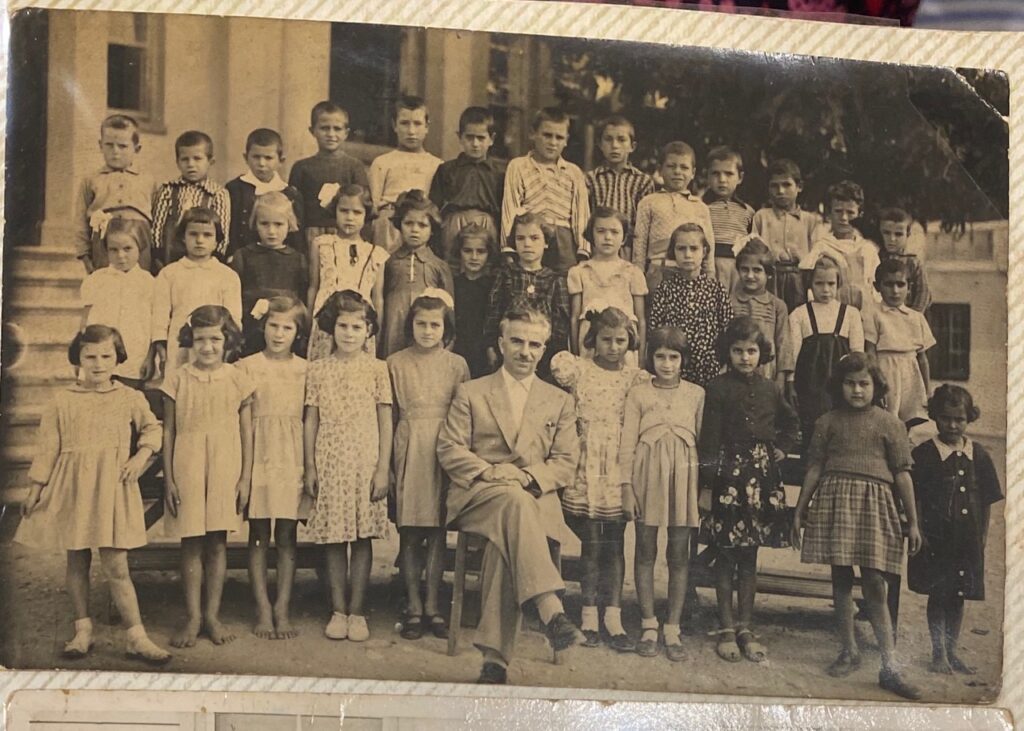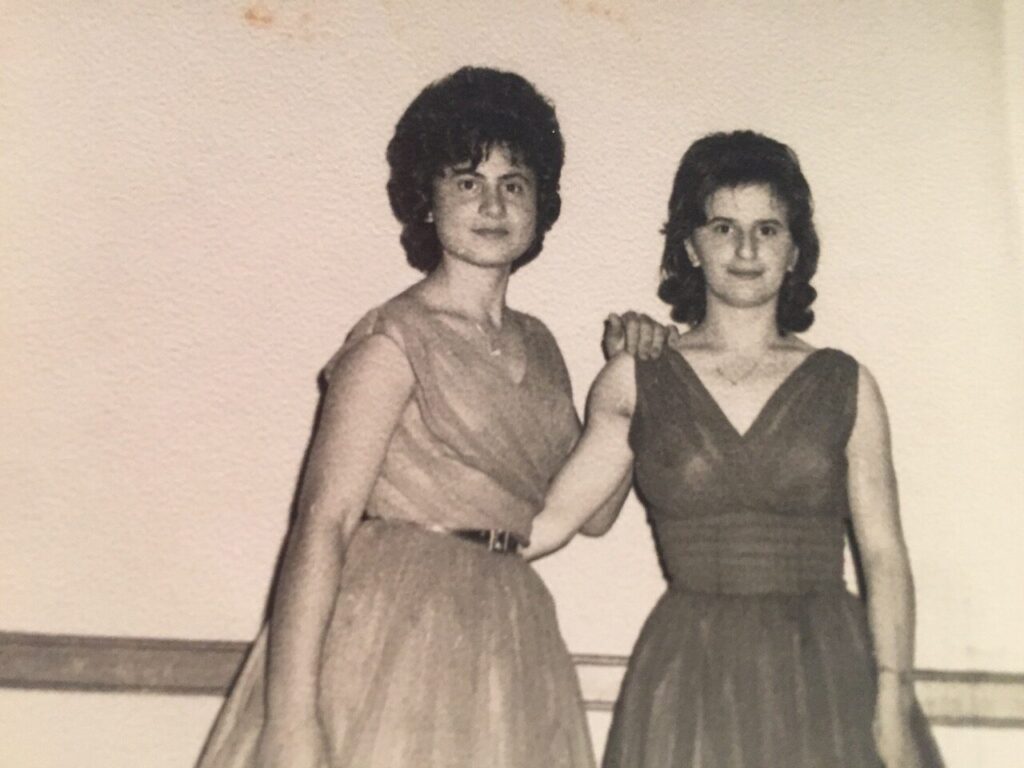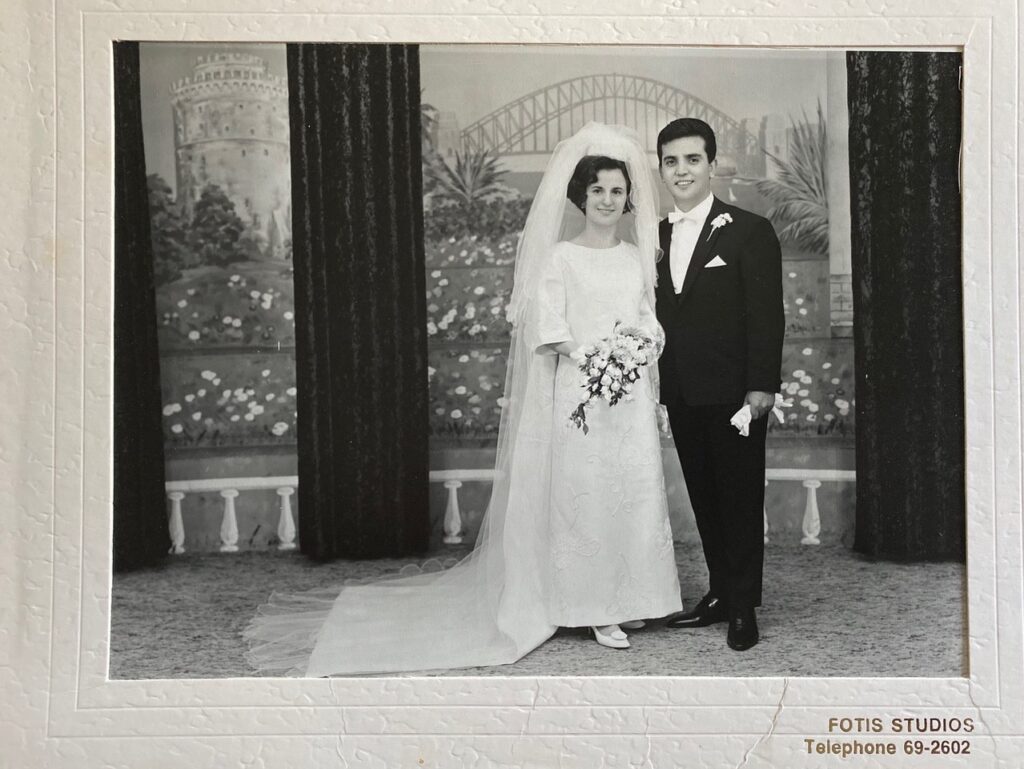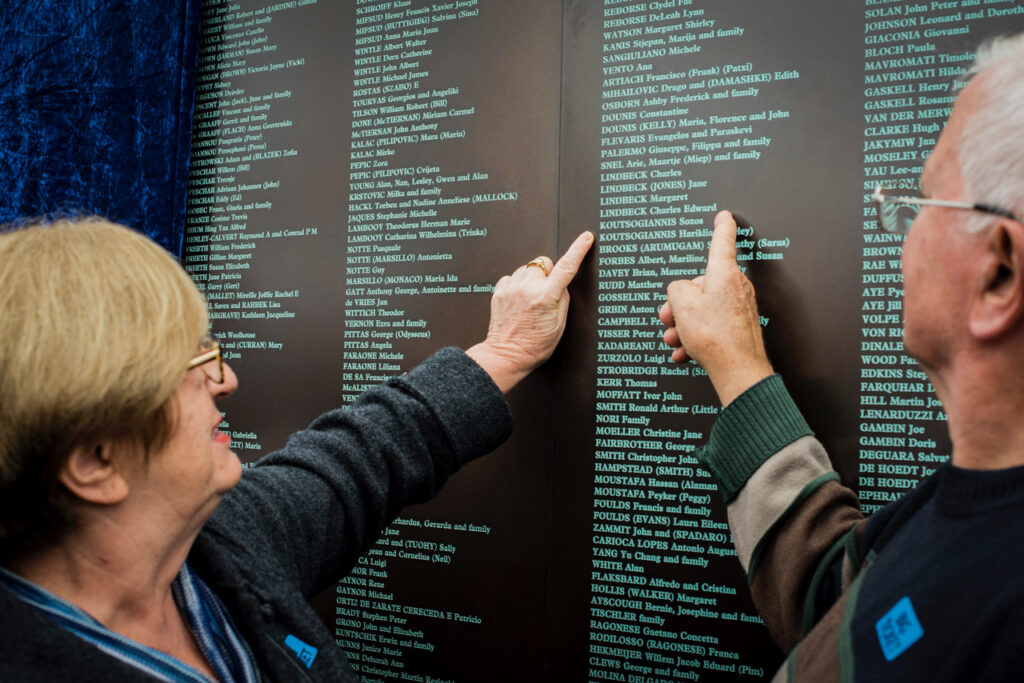Hariklia Yiannakaros, named after her paternal grandmother, was born towards the end of World War II on 27 July 1945, on the seaside village of Platy on the north Aegean Greek island of Lemnos to parents Yianni and Calliope.
In 1949, her father Yianni migrated to Australia, leaving his daughter and pregnant wife for what he referred to as the “unknown land” in search of a better life for his family.
The plan was for Yianni to work and save money so his family could join him in due course. His second child, a son Yiorgo, named after his father was born shortly after while Yianni was in Australia.
Whilst in the north-eastern NSW town of Gunnedah, Yianni was injured in a car accident which left him recuperating without his family and without work for 12 months which delayed the family’s reunion.
Once he recovered in 1954 he saved enough money to bring his family to Australia. Hariklia was 9 years old and Yiorgo was 4.
Hariklia was beside herself with excitement at the prospect of seeing her father after five years and going to live in the land of “milk and honey”.

The family of three sailed to Athens where they boarded the ship KYRINIA to Australia. On board, Hariklia had to look after her mother who was bed ridden with sea sickness as well as look after her cheeky brother who was causing havoc including climbing down the safety ladder which raised the ship’s alarm bells.
The 31-day trip concluded in Melbourne in December 1954 and the family reunited.
Hariklia, a name that derives from the Ancient Greek name “Charíkleia (Χαρίκλεια)” meaning “great glory and elegance” was informed by her father that from that day on she would be known as “Shirley”, no one knows why.
“Dad probably just liked the name,” says Shirley.
Yianni was so excited to be with his family again that he took them out to breakfast to celebrate, a once only occurrence given the havoc Yiorgos caused once again. It was, after all, the first time they had ever been to a restaurant.
From that day on Yianni brought breakfast to the family in their room during their 10 day stay in Melbourne.
Soon after the reunited family went on their very first train trip to their new home in Griffith, a regional city in the north-western part of the Riverina region of NSW.

Yianni, now known as John, had saved and borrowed enough money to buy the restaurant, ‘Broadway’.
In fact it was the bank manager at the time who gave the family their new surname, ‘Jackson’ because “I can’t pronounce your surname John”. So thereafter, Calliope, Hariklia and Yiorgo Yiannakaros became Poppy, Shirley and George Jackson.
Nine months later, another son Mihali, (Michael Jackson) was born.


The children went to school in Griffith which seemed so big with so many people compared to their village of Platy. Shirley could only communicate by pointing to pictures and remembers a wonderful teacher who persevered in teaching her English which she picked up quickly.
She has memories of eating fish and chips strangely wrapped in newspaper for the first time and school lunches featuring her favourite corn beef and salad.
Soon after their Aunt Evegenia, Uncle Nicholas and cousins Toula and Stavros joined them from Platy, Lemnos.
‘The Jackson Five’ moved to Sydney in 1956 where they lived upstairs from their ‘Arcadia Milkbar’ on Parramatta Road Stanmore. During this time Shirley also became the translator for all the Greeks in the neighbourhood and everyone from their village in Greece, accompanying them to their doctor’s, lawyer’s and bank appointments.

Shirley worked in the shop when she wasn’t at school, standing on Shelley’s drink crates to serve customers behind the counter. She recalls once having to literally pick up and carry out a drunk customer.
At school Shirley had the nickname ‘Jackie’ (a play on her new surname). She was a bright student who went to Stanmore Girls and excelled in maths and comprehension. Her father however forced her to leave school at 15 to help him manage the shop and help her ailing mother much to the horror of teachers.
One teacher even visited the shop and pleaded to John that it was a crime to take this bright girl out of school.
“She is a girl and it is her place to help look after her family,” was his reply.

Shirley was raised quite strictly and only allowed to visit her friend Tina Harrow in Ashfield whose family were also from Lemnos, given their fathers were friends. Shirley and Tina met over long division maths and have been besties ever since.
Her brothers George and Michael on the other hand had much more freedom given they were boys, they weren’t forced to follow traditions or speak the Greek language.
Many suitors approached the Jacksons for Shirley’s hand in marriage but it was an introduction by her cousin George Bananis that made all the difference.
George introduced Shirley to Sozos (aka Sam) Koutsogiannis who was also from the same Greek island of Lemnos and had migrated to Australia in 1962. Shirley recalls her little brother Michael accompanying them on dates to prevent the couple from being left alone.


In January 1969 Sozo and Shirley got married during the January festive season at St Nicholas Greek Orthodox Church Marrickville and had their first child, a daughter in 1971, Konstantina (Tina) named after Sozos’ mother.
The young Koutsogiannis family visited Lemnos in 1973, it was the first time back for both Shirley and Sam. The trip was quite restricted with curfews as it coincided with a series of juntas that ruled Greece from 1967 to 1974.
After being away for 18 years, Shirley remembers finding the island so small in comparison to her new home Sydney.
Shirley’s work has always been influenced by her compassionate, caring and friendly nature and when the family sold the shop in Stanmore she worked as a nurse’s aid and then in retail at the department store Farmers which later became Myer.
In 1975 Shirley and Sam welcomed their second daughter Kaliopy (Kaily), named after Shirley’s mother and their family was complete. Sam’s sister Pepina lived with the family until she married in 1982.
In 1980, Shirley and her family moved to Cabarita where the couple lived until recently. In Cabarita they owned a delicatessen followed by a café called ‘The Junction Café Bar ‘where they were much loved by the community.
As a way of honouring their migration stories, in 2015 Shirley and Sam’s daughters Tina and Kaily registered Shirley and Sam on Australia’s National Monument to Migration – the Australian National Maritime Museum’s Welcome Wall – also registering their deceased grandparents Calliope and John and Aunt Pipina and Uncle George the following year in 2016.
Shirley remembers how special this moment was and how proud that her story of a little Greek village girl from Platy who had built a life of “milk and honey” was recognised at the Australian National Maritime Museum.

Honour your Migration Heritage by Adding an Inscription on one of the Welcome Wall’s Bronze Panels
The National Monument is one of the Australian National Maritime Museum’s most important and visible tributes to the country’s migration heritage.
The museum collects the stories of migrants to Australia, and the National Monument is one of our most important and visible ways of recognising the people behind these stories.
Over 30,000 names already appear on the 84 bronze panels that are joined together and run down the northern promenade of the museum, facing Pyrmont Bay.
Register by 30 June 2021 to be part of the next special ceremony.
You can honour a migrant – a loved one, a member of your family, yourself, or a new arrival – on Australia’s National Monument to Migration at the Australian National Maritime Museum.
As an acknowledgement of your tax-deductible gift of $500AUD your name, or the name of a family member, relative, co-worker or friend who is a migrant will be etched in bronze onto the Australia’s National Monument to Migration in recognition of their journey across the seas to make Australia their new home.
A donation is a fitting way to honour loved ones who have migrated to Australia and to ensure their personal stories are held in this important national collection.
The Australian National Maritime Museum honours migrants on its Welcome Wall
The Australian National Maritime Museum’s digital publication We are many – Stories of Australia’s migrants which brings attention to one of the pillars of our national story – the making of modern Australia by its immigrants.
This publication is a showcase of the voices and stories of migrants registered on the Museum’s Welcome Wall which features almost 30,000 names of people who have travelled across the seas to make Australia home including 1,532 from Greece.
The publication includes 61 stories of migrants from 32 countries (including a story from Greece, please see page 81) as well as 10 general articles about migration.
Greek community to be honoured on Australia’s new National Monument to Migration



